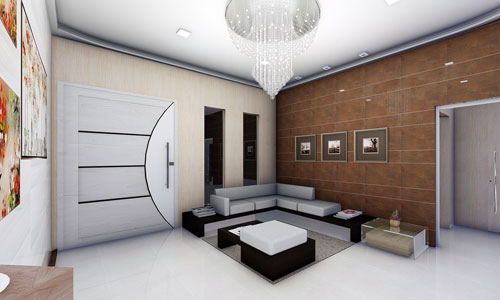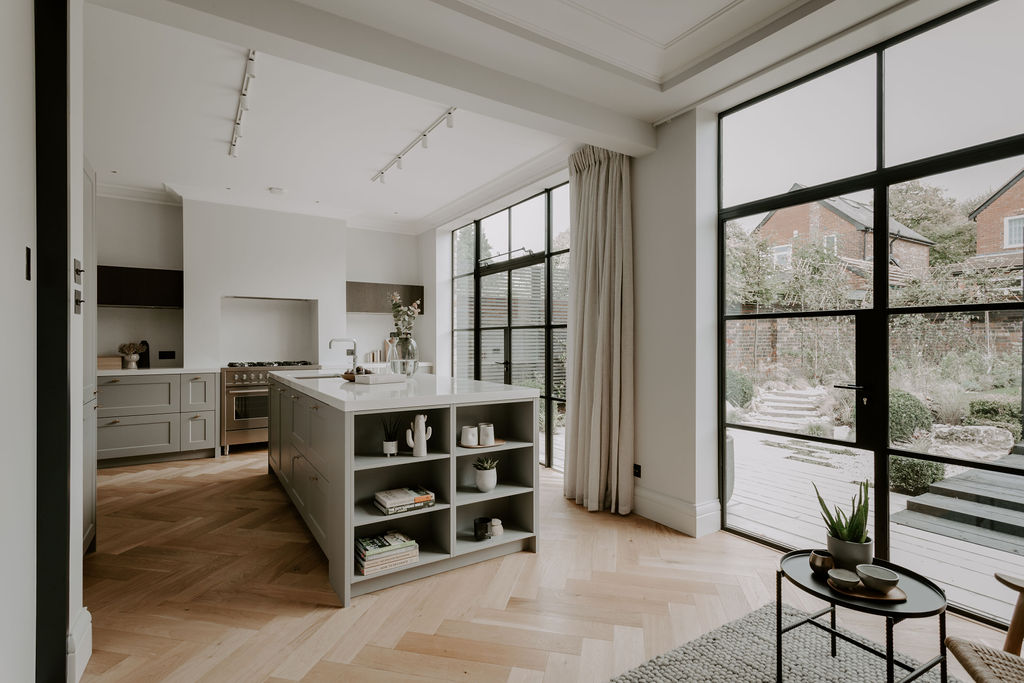Winchester Architect Services to Bring Your Vision to Life
Winchester Architect Services to Bring Your Vision to Life
Blog Article
Taking Full Advantage Of Aesthetic Appeal: The Harmony In Between Interior Design and Home Architect Strategies
Comprehending the subtle interplay in between interior design and home style can dramatically raise the aesthetic allure of a space. This marriage of layout self-controls includes a thoughtful integration of building components with interior formats, and a skillful application of concepts such as balance, rhythm, and comparison. As we discover this synergy, we will certainly uncover means to create aesthetically striking and practical environments that not just show personal style, but additionally adapt to the vibrant needs of modern-day living.
Comprehending the Essentials: Defining Interior Design and Home Architecture
Indoor layout and home style, often intertwined, represent the visual and architectural elements of our living areas. Inside style is a multifaceted discipline that includes developing useful, risk-free, and visually pleasing spaces inside a building. On the various other hand, home style largely focuses on the solid framework of a structure.
The Harmony Clarified: Just How Interior Decoration and Home Architecture Intersect
Recognizing the synergy in between indoor layout and home architecture can unlock a world of imagination and performance. When discussing this intersection, the impact of architecture on interiors is an important element to think about. This conversation will certainly focus on the unifying design concepts that mix these two areas right into a harmonious whole
Unifying Style Principles
While it might seem that indoor design and home design are two distinctive techniques, they are in fact deeply interconnected, forming a harmony that is necessary for developing unified living rooms. Unifying style principles are the pillars that facilitate this symbiosis. In essence, these principles offer as the bridge, joining indoor layout and architectural methods.
Architectural Impact on Insides
The intertwining of interior decoration and design comes to be much more apparent when one takes into consideration the architectural impact on interiors. Building components are intrinsic to a room's performance and aesthetic appeals, forming the design from the beginning. Columns, arches, stairs or beam of lights, for instance, serve both structural and attractive purposes. They can separate spaces, develop focal points or imbue an area with a certain vibe. Consideration of percentage, appearance, and light also originate from architectural influences. Eventually, style mold and mildews the canvas whereupon indoor designers function. Their synergy is hence indisputable: design establishes the structure, which interior decoration improves with shade, design, and structure. This cooperative partnership ensures an unified equilibrium between feature and beauty, optimizing the visual appeal of any type of space.
Key Concepts in Integrating Interior Design and Home Design
Striking a balance in between capability and aesthetics is a basic element of integrating indoor layout and home architecture. A just as essential concept is the integration of lasting style to develop energy-efficient and environmentally friendly homes. Understanding and exploring different architectural styles can also play a vital role in attaining a harmonious design. Luxury home architect.

Stabilizing Performance and Aesthetic Appeal
Stabilizing capability and aesthetics in interior layout and home design becomes one of the paramount principles to consider. This fragile balance calls for a precise blend of practicality and allure, intending to produce spaces that are not only visually pleasing yet additionally offer their designated purpose efficiently. Aesthetics uplifts the mood and impacts the assumption of area, whereas capability makes sure use and convenience. Secret to this equilibrium is a thoughtful selection of components such as texture, color, and lighting, which should enhance each various other while offering their individual roles. Just as important is the efficient arrangement of the area, with a well-planned design adding substantially to the synergy between capability and appearances. This harmonious mix ultimately improves the lifestyle for the residents.
Lasting Design Assimilation
In maintaining the equilibrium between functionality and appearances, one need to likewise take into consideration the assimilation of sustainable design principles. This strategy not just boosts the visual appeal of an area however additionally guarantees its durability and reduced ecological influence. The essential depend on choosing products that are environment-friendly, resilient, and appealing. This consists of all-natural, recycled, or low-impact products that add to a healthier and more lasting globe. Designers and architects can additionally incorporate energy-efficient systems, such as energy-saving appliances or solar panels. Ensuring excellent indoor air high quality via sufficient all-natural lights and ventilation is crucial. An unified fusion of indoor style and home style, assisted by sustainability, can create spaces that are gorgeous, functional, and eco friendly.
Discovering Building Styles
While there are a wide variety of architectural designs to explore, it is crucial to understand that each one lugs its special the original source concepts that can dramatically affect the harmonization of indoor design and home design. These designs, ranging from the elaborate Baroque to the minimal Modernist, lug unique approaches and looks that, when correctly comprehended and used, can develop homes that are not only aesthetically stunning yet additionally harmoniously integrated in terms of layout and style. Choosing an architectural style is not merely regarding personal aesthetic preference; it has to do with choosing a layout language that speaks with the home owner's lifestyle, viewpoint, and desires, producing a home that is a true representation of its residents.
Situation Researches: Phenomenal Examples of Style and Style Synergy
Exploring some extraordinary instance research studies supplies a profound understanding of just how design and architecture can harmoniously merge to create engaging and useful areas. The legendary Fallingwater residence, developed by Frank Lloyd Wright, remarkably shows this internet synergy. Wright's style masterfully integrates the house with its bordering landscape, while the indoor mirrors the exterior's organic kinds. Another instance is the minimalistic Tadao Ando's Church of Light in Japan. The designer attained a perfect equilibrium between simplicity and drama, using raw concrete and light. Internally, the stark, minimal layout produces a feeling of serenity and spiritual contemplation. These examples illustrate the importance of synergy in between interior decoration and architecture in accomplishing visual and useful success.
Practical Tips: Enhancing Your Home's Visual Appeal
Drawing ideas from the study of architectural and design harmony, home owners too can implement some useful methods to improve their home's aesthetic appeal. A harmonious blend of colors, textures, and lights can boost a room, developing a cozy and welcoming ambience. Opting for furniture that complements the architectural components of the home can cultivate a sense of unity. Wall surface art and design items can include personality, showing personal design and preference. Incorporating plant, either through interior plants or sights to the outdoors, can bring a component of nature, supplying a relaxing impact. Smart use of mirrors can open an area, offering an impression of a bigger location. Eventually, the aesthetic appeal hinges on stabilizing performance with style, creating a home that is both comfortable and attractive.

Future Trends: Exactly How Modern Techniques Are Altering Interior Design and Style
As the world progresses, so do the trends in interior decoration and style. Modern this contact form methods are significantly concentrating on sustainability, including eco-friendly materials and energy-efficient styles. Modern technology plays a vital role, with wise homes coming to be the standard, integrating AI and IoT for enhanced capability. Additionally, minimalism remains to acquire grip, stressing simpleness, functionality, and clutter-free spaces. This is often coupled with biophilic design, attracting motivation from nature and advertising wellbeing. The pandemic has sped up the requirement for flexible, multi-purpose rooms, blurring the lines in between work and home. These patterns reflect a shift in the direction of designs that are not just cosmetically pleasing, yet likewise environmentally aware, technically progressed, and adaptable to altering way of lives.
Final thought
Finally, the combination of interior decoration and home design strategies is a dynamic technique to enhancing visual charm. By leveraging essential concepts like rhythm, comparison, and balance, and including aspects of contemporary living, developers can create flexible, visually pleasing environments. Via understanding this synergy, property owners can make enlightened choices that not just elevate their living rooms but also add to their overall well-being.
Recognizing the refined interplay in between indoor style and home style can dramatically raise the visual allure of a living room.Indoor layout and home architecture, often linked, stand for the architectural and visual elements of our living areas.While it might appear that interior design and home design are 2 unique self-controls, they are in fact deeply interconnected, developing a harmony that is vital for developing unified living spaces.The intertwining of indoor layout and architecture ends up being even more obvious when one considers the building impact on interiors. A harmonious blend of interior layout and home architecture, directed by sustainability, can develop rooms that are beautiful, functional, and eco pleasant.
Report this page